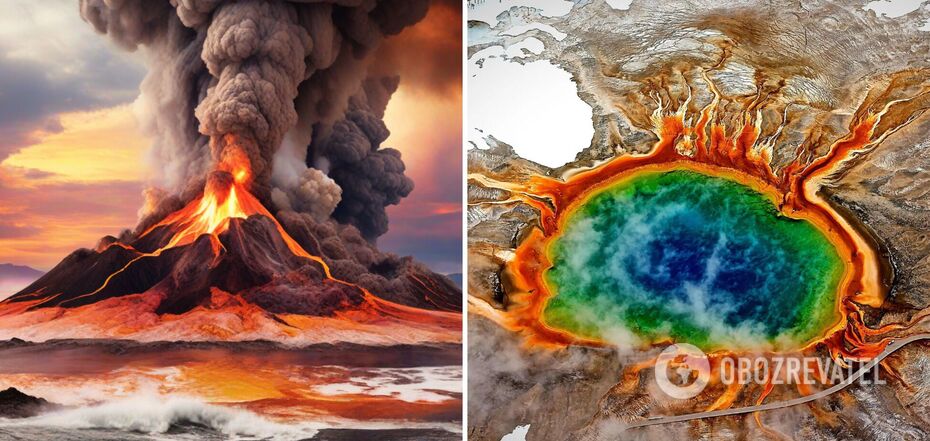News
There are 20 supervolcanoes on Earth: here is what happens if even one of them erupts
Although there are only about 20 supervolcanoes in the world, an eruption of just one of them would be enough to trigger a planetary catastrophe. The last such eruption occurred about 26,500 years ago, and the closest to a supervolcano in terms of power was in 1815.
OBOZ.UA tells you what is known about supervolcanoes and what, according to scientists, will happen when such an explosion occurs on the Earth.
What is a supervolcano?
According to volcanologist Michael Poland, a supervolcano is a "made-up word" that is misleading and often misapplied. He notes that it sounds too Hollywood, like Superman or Superstar.
The supervolcano has a Volcanic Explosivity Index (VEI) of 8 (the highest recorded value of the index), and the potential to erupt with serious consequences for the global climate and ecosystem. However, as Poland points out, scientists are not aware of any volcanic eruption that has caused mass extinction.
So, in fact, a supervolcano is not some huge mountain but an ordinary volcano that, however, has the ability to erupt extremely powerful.
It is believed that the largest volcanic explosion in geological history occurred in Tobi (Indonesia) about 74,000 years ago, receiving a VEI8 rating. Some scientists have even speculated that one of these eruptions nearly wiped out humanity as the population soon declined. However, later archaeological evidence suggests that Homo sapiens who lived on thrived after the eruption.
The last supereruption on Earth occurred at the New Zealand volcano Taupo about 26,500 years ago.
Thus, none of today's scientists have ever seen and probably will never see such an eruption. However, they are scientists to make predictions.
What happens if a supervolcano erupts
The closest event to a supereruption occurred in 1815 when Tambora volcano erupted. The VEI was recorded at 7 points.
It is believed that 10,000 to 11,000 people died from the direct consequences of the eruption.
Another 49,000 to 90,000 people died from starvation and epidemic diseases after the eruption on the islands of Sumbawa, Lombok, and Bali.
In addition, the eruption caused global temperatures to drop the following year, leading to famine in many regions. It wasn't even a supervolcano.
As Katie Reeves, a lecturer at the University of Warwick, explained, supervolcanoes can cause very rare and very large silicic supereruptions.
She warns that a supereruption will have a global impact as it will affect all systems that are interconnected.
According to her forecast, the global temperature will drop by 1-3 degrees in the first six months after the eruption and will not return to normal in the next 5-10 years.
This will lead to a worsening of the situation in the agricultural sector as plants will receive less sunlight and will also suffer from extreme weather events such as frosts and droughts.
"Major climate events such as El Niño and monsoons could also happen, affecting hundreds of millions of people. There will also be serious consequences for water security as rainfall will decrease by 5-10%, as well as for energy and finance," Reeves predicts.
A supereruption would also hit the airline industry, even worse than it did in 2010 when Eyjafjallajökull erupted in Iceland.
Such a supereruption would also result in sulfur dioxide entering the stratosphere. There is a risk that there they will react with water vapor in the atmosphere, creating sulfurous aerosols that can scatter incoming radiation and temporarily cool the climate, causing a "volcanic winter".
Subscribe to OBOZ.UA channels on Telegram and Viber to keep up with the latest events.



























